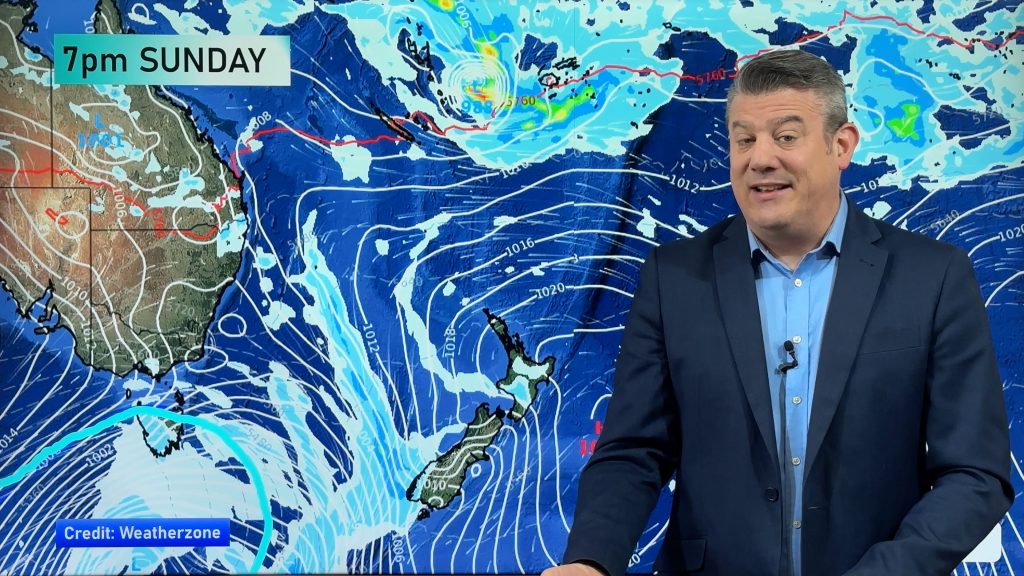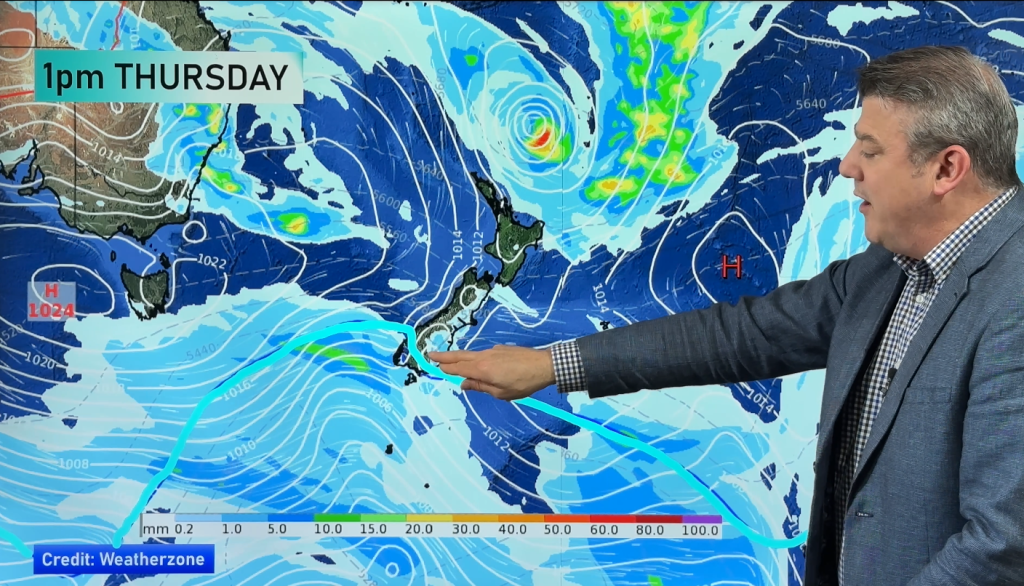
> From the WeatherWatch archives
In 2005, Governor of California Arnie Schwarzenegger announced a reduction target of Greenhouse Gas emissions to 2000 levels by 2010. And a reduction of the gas emissions to 1990 levels by 2020 and a reduction to 80 per cent below 1990 levels by 2050.
This was followed last month in Scotland by The Climate Change (Scotland) Bill setting targets to cut greenhouse gas emissions by 42 per cent by 2020 and 80 per cent by 2050.
Against this background there has been much talk recently of how much New Zealand needs to reduce its gas emissions. In particular, the Government has been consulting with public input over what emissions reductions targets should be made by 2020, and take this “mid-term” target to the UN climate talks in Copenhagen in December.
It is worth putting the question into context. What does the latest science say?
The recent science published since the 2007 Intergovernmental Panel on Climate Change reports signify that a 40 per cent target by 2020 is the least that developed countries need to do to prevent “dangerous climate change” of more than 2C.
Nicholas Stern, the economist commissioned by British Prime Minister Gordon Brown to analyse the impact of climate change, warned about the potentially “devastating” consequences of global warming. Many new studies suggest that global warming could be of greater magnitude and sooner than expected.
Last year Dutch scientist Van Vuuren and others around Europe estimated, from newly developed climate mitigation scenarios, that an average minimum warming of 1.4C will remain in the system even if the most stringent of greenhouse gas emissions reductions targets are put in place. Currently global mean-surface temperatures have increased by 0.7C above pre-industrial temperatures.
Then there is a committed warming of 0.6C or more as ocean warming catches up with the atmosphere.
Added to that there is the delay as global energy technology and infrastructure is changed (perhaps 20 to 40 years) after which time carbon dioxide emissions peak and then decline (another 30 years or more). Finally carbon dioxide build-up in the atmosphere stabilises.
It is only after this event that further warming in global mean-surface temperature ceases. So, even with the most stringent climate policy, the temperature increases do not stabilise until about 2100.
The minimum warming, while new technology is brought in and energy infrastructure is changed to largely renewable sources, amounts to 0.8C. Adding this all up, the maths comes to at least an “inconvenient” 2.1C or more.
One area of science that the Panel on Climate Change 4th Assessment Report did not do well was on sea level rise. Recent science indicates there will be more than was indicated in the 2007 report.
This is because the melting of the planet’s ice, from small ice caps in the Canadian Arctic, the Andes and the Himalayas to the huge ice sheets of Antarctica and Greenland, largely determines the rapidity and extent of sea level rise.
Observations by John Church from Australia’s Commonwealth Scientific and Industrial Research Organisation show that global average sea level has already been rising, by 17cm during the 20th century. His analysis shows that this rate is increasing over the past decade, with recent satellite measurements showing this rise tracking at the upper limit of projections since 1990.
But the climate change panel’s 4th Assessment Report excluded “future rapid dynamical changes in ice flow”, referring to ice cap behaviour. Recent surveys show that Greenland is losing 300 gigatonnes of ice per year, and West Antarctica and the Antarctic Peninsula about 200 gigatonnes per year – a combined sea level rise of about 1.4 mm/year.
One of the largest contributors to sea level rise is the thermal expansion of the oceans. At the moment carbon dioxide levels are about 390 parts per million (ppm).
A study this year showed that, even if emissions stopped once emissions reached 450 ppm, with such a scenario sea level rise because of the warming of the oceans would amount to 20cm by 2100.
Again the maths are inconvenient, amounting to at least 1.6m by 2100. But when we talk of 1 or 2m sea level rise, it continues past 2100.
What is important is that about 60 million people live within a metre of mean sea level, and this is expected to increase to 130 million during this century. Much of this population resides in the major river deltas of South and Southeast Asia.
And in the South Pacific, there are many atoll islands whose maximum height above sea level means they are very likely to be inundated by storm surges during tropical cyclone occurrences.
Therefore, Governor Schwarzenegger’s target of 80 per cent greenhouse gas emission reductions by 2050, and The Climate Change Bill (Scotland) of 42 per cent of a mid-term target by 2020, although bold, are both realistic and necessary to prevent much more than a 2-3C warming of global mean-surface temperature and 1-2m sea level rise by 2100.
* Dr Jim Salinger is president of the Commission for Agricultural Meteorology of the World Meteorological Organisation.
NZHERALD.co.nz
Comments
Before you add a new comment, take note this story was published on 20 Jul 2009.





Add new comment
Steve on 22/07/2009 9:48am
Read Ian Wishart’s book.
Global Warming is a bit thin and the media enjoys scaremongering and chooses to state opinions as facts rather than giving an equal balanced view. Weatherwise, we do have cyclic El Nino and La Nina patterns and they have been verified by research (peer -reviewed), but saying that we are causing global warming- sorry – there is more evidence suggesting otherwise. You know if we take this seriously, on Earth hour all it takes is one small fart to blow away the carbon credits that 100 houses made for that single hour. There must have been a lot of silent ones.
Notice how the media uses fear to manipulate? Swine Flu? Bird Flu? Global Warming? Weapons of mass destruction? Y2K? Need I say more?
Reply
Andrew on 21/07/2009 11:54pm
I heard that the earth is flat. The scientific “proof” to the contrary is bunkum – its just a hoax. Just look out the window, does it look like we’re living on a spherical object?
Stupid scientists they don’t know nearly as much as the ignorant rabble who proove things with gut feeling and personal anectdotes.
Lets disband the Universities and research institutes because clearly they are just a waste of money. We can establish the truth through internet forums instead.
Reply
Ken Ring on 21/07/2009 11:09am
Jin Salinger did his phD in global warming, so he is not likely to ever say anything else. If he became a skeptic it would negate his doctorate.
Jim was public NIWA spokesperson. NIWA said in April that this winter would be above normal in average temperatures. Then May turned out to be the coldest May since 1959 and colder than average June and July has followed, and da daaa..NIWA has changed its mind.
So why should we ever listen to their predictions?
Reply
Moirai Artists on 21/07/2009 7:51am
So global warming is a hoax eh? The science says otherwise. So do the people living in the Maldives and low-lying atolls! Even if it (the rapid rise in temp.) was within the margins of a natural climate shift, we cant afford to dissmiss this issue.
Things are changing fast. We need to prepare for scenarios caused by CO2 buildup. If we deny the science, shall we start saying the Earth is flat and created in seven days then!!
I recommend watching the new film called HOME on You-tube…
Reply
David on 21/07/2009 5:58am
Yeah…that’s all it is!
Reply
Turkey on 21/07/2009 4:33am
“….Recent surveys show that Greenland is losing 300 gigatonnes of ice per year, and West Antarctica and the Antarctic Peninsula about 200 gigatonnes per year….”
Yes, and even more ice than that gained by East Antarctica… if Global Warming is for real it doesn’t need the ‘inconvenient’ facts supressed. If they have to be, what does that tell us?
Reply
John on 21/07/2009 2:30am
Jim, and many other supposedly wise and educated people, obviously have learned very little from history.
Reply
SW on 20/07/2009 11:18pm
If we had global warming there would be no need to go to Noumea or Hawaii to escape our dreary winters.We need to make more emissions.
Reply
rachel kennedy on 20/07/2009 11:13pm
Jim Salinger lost his job recently and it’s a shame that he has focussed on global warming and climate change.
I would have thought a man of his experience would understand that it is weather cycles and that it is not the first time that this planet has been through such a stage.
New Zealand is having cool years overall recently and there are reports of glaciers melting in the South Island but little is said about the ones that are increasing and also a similar story in the Antarctic.
Put the focus in the right areas and stop scaremongering Jim and others!!!
Rachel Kennedy
Reply